#American Muscle
Text
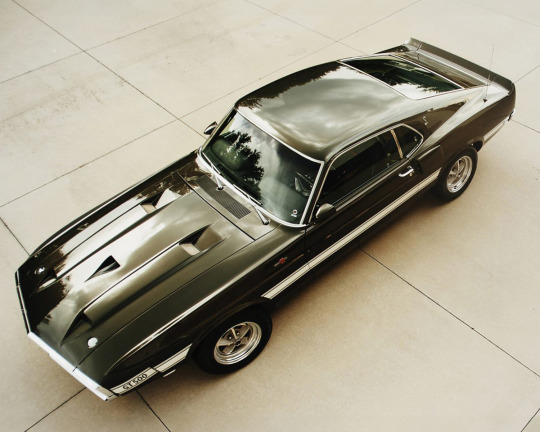
1969 Shelby Mustang GT500 Fastback
1969 was, effectively, the final year for the Shelby Mustang. By now assembly had shifted in Michigan from California where it was contracted out to A.O. Smith Corporation. Smith, an established Motor City contractor, had brought a level of serious manufacturing skill, supplier management, procedure and standards never seen at Shelby’s facility where LAX met the vibrant (and sometimes extreme) subculture of Venice, California.
Now largely designed and specified by Ford staffers, the 1969 Shelby Mustang was drastically different visually from the standard Mustangs, with a completely different nose and grille, a wide rectangular opening with blacked out grille flanked by 7” headlights and with Shelby’s characteristic driving lights now smaller rectangular pieces below the attractive, but largely ineffective, bumper. The special Shelby hood had five ducts, three NACA-style surface ducts replaced the complicated but entertaining shaker hoods of years gone by to supply cold air directly to the engine air intake and two extractors at the back of the hood relieving underhood pressure and exhausting heated air in front of the windshield.
A surface duct behind the headlights and a scoop behind the door and in front of the rear wheel arch that was ducted to the rear brakes continued the performance theme. The rear panel was completely different from the Mustang, housing a set of 1965 Thunderbird sequential taillights with the rear license plate placed between them and including a small ducktail spoiler. The area under the bumper where standard Mustangs carried their license plate contained two rectangular outlets for the Shelby’s dual exhaust system. Standard wheels were unique 5-spoke Mag Stars with alloy centers and chrome steel rims.
Under the hood lay the 428 Cobra Jet which had powered the ’68 Shelby GT500KR. Both Ford and Shelby recognized the superiority of the high performance CJ and made it the standard engine for 1969’s Shelby Mustangs.
At the end of the 1969 model year 789 Shelby Mustangs were in-process at A.O. Smith. They were visually updated with black hood stripes and a chin spoiler and given new VINs. Otherwise the 1970s were exactly the same as the ‘69s making these two years essentially identical examples of the end of the Shelby Mustang series which had begun only a scant six years before.
Avidly sought by collectors and obsessively documented by the Shelby American Automobile Club, most Shelby Mustangs are well known and have well known histories. Occasionally, however, a example appears which has been out of sight for years. Even more rarely it turns out to have been little used and continuously maintained by a thoughtful and caring single owner for nearly forty years.
The Black Jade 1969 Shelby Mustang GT500 Sportsroof fastback offered here is one of those rare and highly desirable cars. It was delivered new to Ford’s dealer in Yokohama, Japan, Marubeni Motors K.K., and was sold thereafter to its first, and only, owner in Japan. It has been repainted in the original color once but is otherwise completely original, as delivered and has only 84,941km on its metric-calibrated export speedometer (52,779 miles.) Its sympathetic maintenance and care shows throughout in its clean, straight, rust-free condition.
Power of course comes from the 428 cubic inch Cobra Jet Ram Air V-8 engine which Ford and Shelby conservatively rated at 335 horsepower at 5,200rpm and a gut-wrenching 440 lb-ft torque at 3,400rpm. It puts the power through Ford’s highly regarded C-6 automatic transmission and Traction-Lok differential with high speed 3.00:1 gearing that takes full advantage of the CJ engine’s torque. In addition to the highly desirable drivetrain specification it is loaded with options including the Visibility Group, Goodyear white letter tires, Sport Deck folding rear seat, power front disc brakes, power steering, tilt steering column, Selectaire air conditioning, AM/8-track stereo radio, tinted glass, deluxe belts, tachometer and trip odometer.
It is finished in one of the Shelby Mustang’s most attractive colors, Black Jade. The interior and high back buckets seats are upholstered in black Clarion Knit/Corinthian vinyl that complements with Black Jade exterior.
It returned to the U.S. in 2006 but has never been titled by its current owner so it remains a one-owner car. Its absolutely clear history, one-owner provenance, highly original condition with known mileage and extensive options list are attributes shared by few Shelby Mustangs of this age. This is a rare opportunity for an astute collector to acquire a particularly significant, unmolested Shelby Mustang from the last, and most highly developed, series.
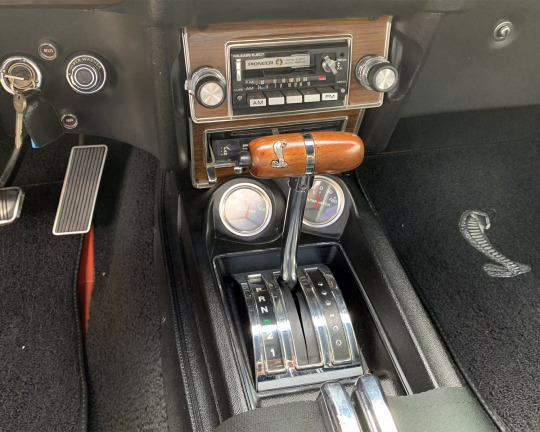
1969 Shelby Mustang GT500 Fastback
Powered by a 428ci V8 engine mated to a C6 automatic transmission, this beauty includes the original #Shelby owner card, a copy of the Shelby work order and Window Sticker.
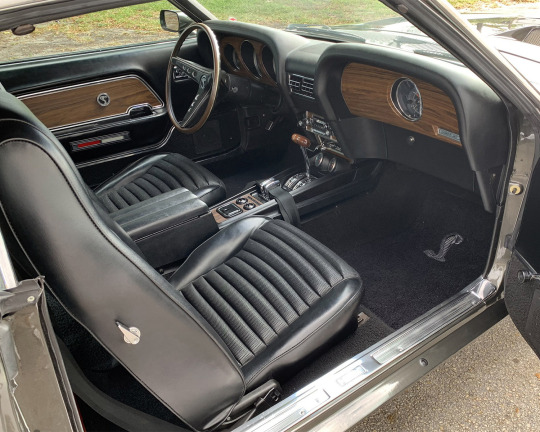


1969 Shelby Mustang GT500 Fastback

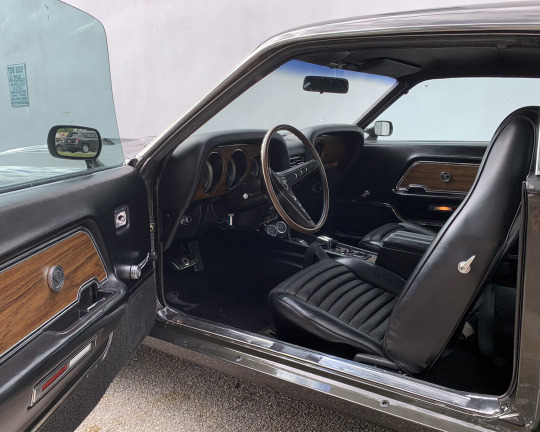
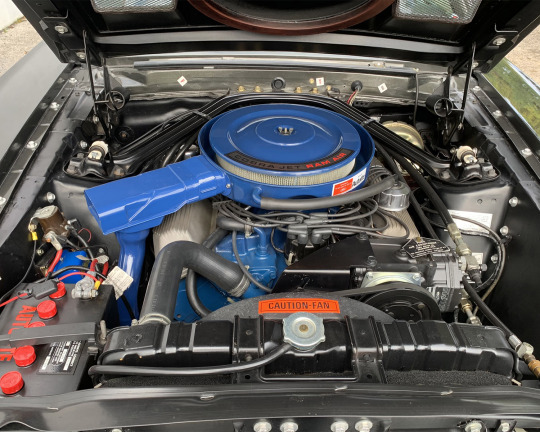
1969 Shelby Mustang GT500 Fastback
#Shelby Mustang GT500 Fastback#Shelby Mustang GT500#Shelby Mustang#Mustang#Shelby#car#cars#muscle car#american muscle#ford
52 notes
·
View notes
Text

#charger#charger rt#rt#dodge#dodge charger#muscle car#muscle cars#musclecar#musclecars#muscle#american muscle#classic#classic car#classic cars#classic muscle#kustom kulture#kustom#custom#custom car#car#cars#pro touring#restomod#resto mod#kustomblr#hot rod#hotrod#street rod
6K notes
·
View notes
Text
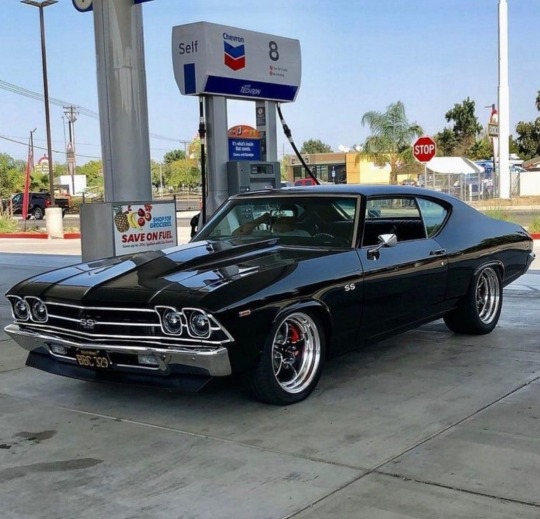
2K notes
·
View notes
Text
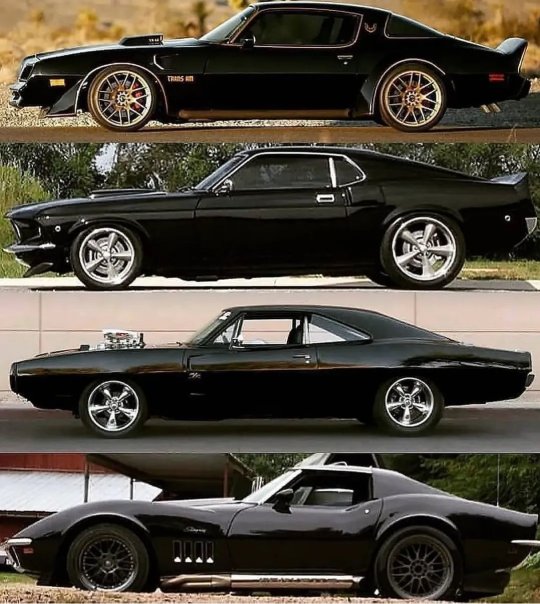
Japanese car fan, would follow @autoass on Twitter
1K notes
·
View notes
Text

1957 Ford
985 notes
·
View notes
Text
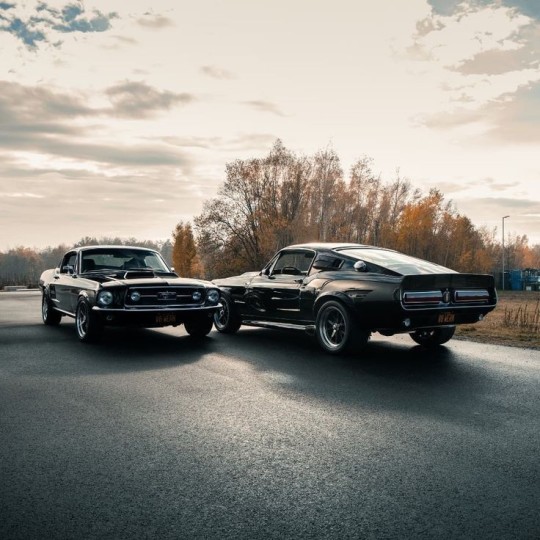
Couple 'stangs
573 notes
·
View notes
Text

#delorean#dmc#dmc12#back to the future#retro#muscle car#muscle cars#musclecar#musclecars#muscle#american muscle#cyberpunk city#cyberpunk#vaporwave#synthwave#retrowave#retrofuture#1980s#80s aesthetic#1980s aesthetic#80s#neon#neon aesthetic #aes#aesthetic#vhs#dreamwave#chillwave#noir#neonnoir
1K notes
·
View notes
Text

Lingering after the show is over. Neon glow like a Jeweler’s case!
#antique car#muscle car#67 camaro#photography#chevrolet#american muscle car#fast car#chevy team#chevy camaro#chevy#classic muscle#muscle cars#american muscle#show car
455 notes
·
View notes
Text
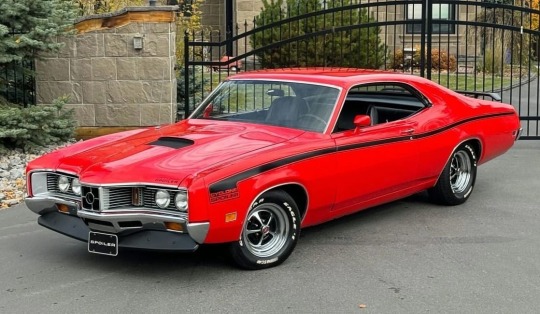
1971 Mercury Cyclone Spoiler 429 Cobra Jet
#freddie mercury#cars#car#classic car#ford#chevy#supercar#ford f 150#ford mustang#camaro#chevelle#mercury black#sailor mercury#mustang#convertible#pickup#american muscle#cadillac
640 notes
·
View notes
Text
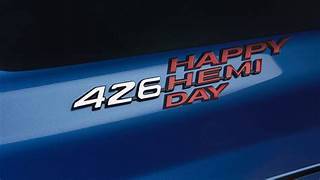
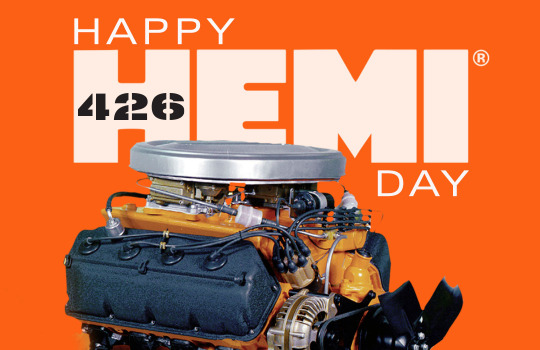



Happy Hemi Day!
#car#cars#muscle car#american muscle#mopar#moparperformance#moparnation#dodge#moparworld#Happy Hemi Day#hemi
29 notes
·
View notes
Text

#camaro#muscle car#muscle cars#musclecar#musclecars#muscle#american muscle#classic#classic car#classic cars#kustom kulture#kustomblr#kustom#kustomstyle#custom#custom car#car#cars#pro touring#resto mod#street rod#hot rod#hotrod#rod#street machine
4K notes
·
View notes
Text

The SD-455 engine was originally earmarked for the 1973 Formula, Trans Am, LeMans, GTO, Grand Am, and Grand Prix. As the model year began, hundreds of orders were taken for SD-455 equipped cars, but due to delays certifying the engine for emissions, by March 1973 not a single SD-455 order had been filled. Pontiac thought about simply killing the project entirely and taking the loss, but enthusiastic engineers and marketeers suggested that since SD-455 engines had been built, it was more cost effective to sell them instead of scrapping them.
By February 1973 there were 673 outstanding orders (483 by customers) for SD-455 equipped cars. Pontiac conducted a survey to determine the status of the orders :
• About 50% of the customers stated the reason they ordered their Pontiac in the first place was for the SD-455 engine.
• 198 customers were still waiting for their order to be filled.
• 145 customers bought the same model, but with a lesser engine (almost all opted for the 455).
• 52 customers bought another car (21 were Pontiacs)
• 78 customers cancelled their order
• others did not reply
With a limited supply of engines, in March 1973 Pontiac announced the cancellation of the SD-455 for all models except Formula and Trans Am. By year end, 43 Formulas and 252 Trans Ams received the SD-455, and there was one 1973 Grand Am SD-455 built as a pilot car.
#trans am#firebird#ta#firebird trans am#pontiac#formula#sd455#70s#muscle car#muscle cars#musclecar#musclecars#muscle#american muscle#classic#classic car#classic cars#classic muscle#car#cars#racecar#1970s#1970s aesthetic#vibes#good vibes#style#lifestyle#aes#aesthetic#aesthetics
892 notes
·
View notes
Text
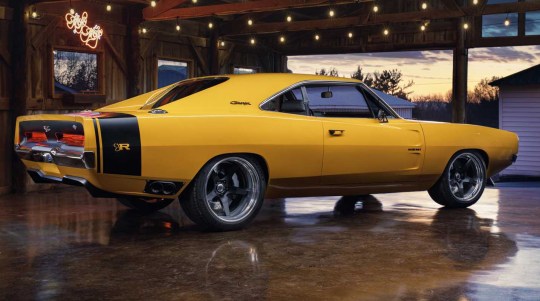


#dodge#dodge charger#charger#captiv#ringbrothers#dodge charger captiv#muscle car#muscle cars#american muscle#tuning#modified#modified cars#cars#classic#classic restoration#restoration
558 notes
·
View notes
Text


1966 Pontiac Tempest.
#classic cars#cars#american cars#pontiac#pontiac tempest#gto#american muscle#muscle cars#muscle car#general motors#gm#Detroit#made in detroit#antique car#antique
554 notes
·
View notes
Text

237 notes
·
View notes
Text


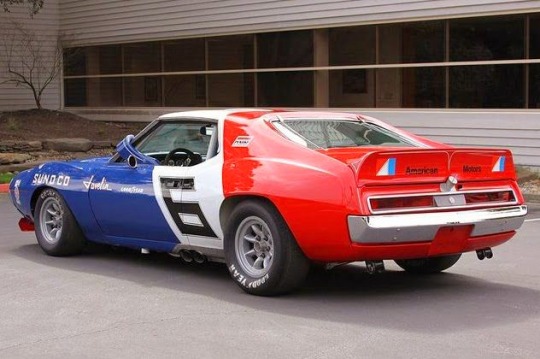


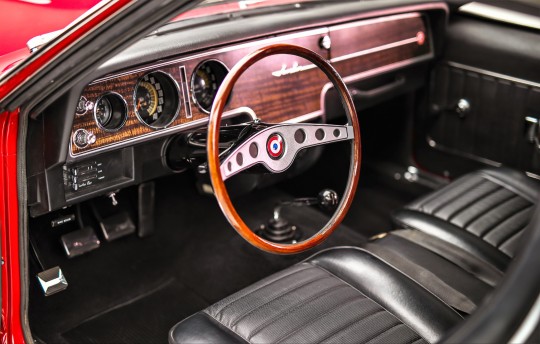
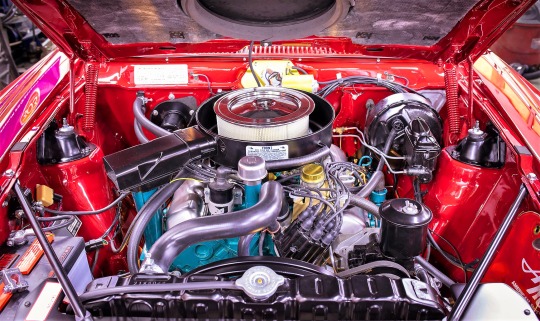
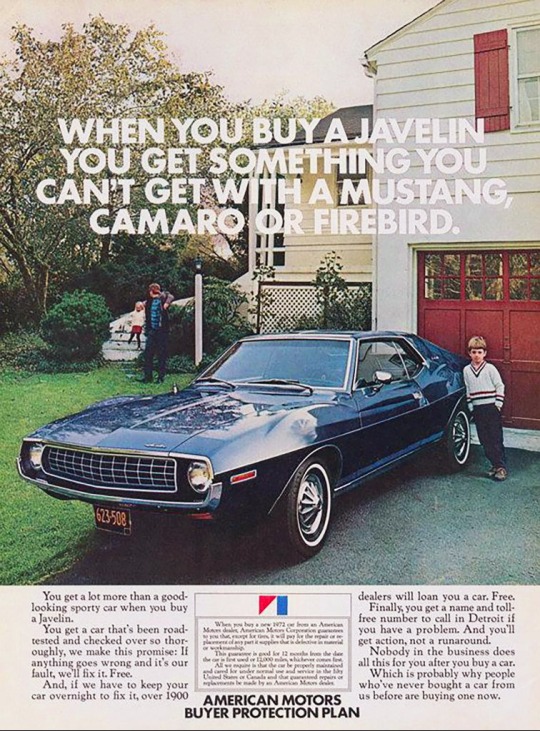
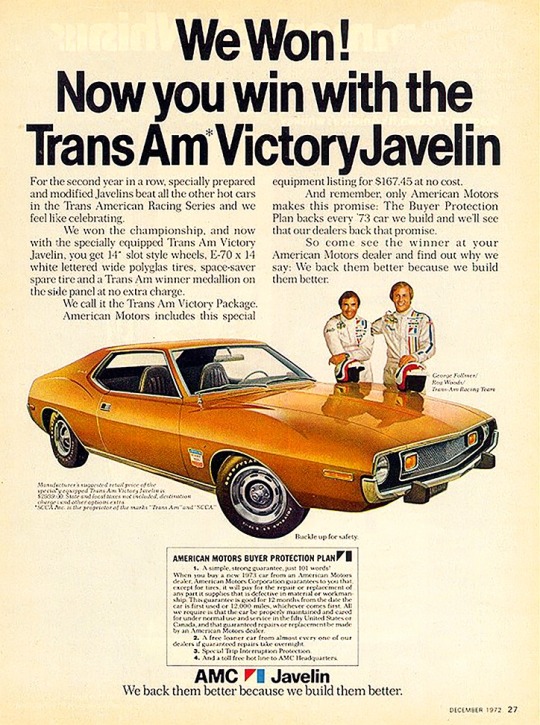

🇺🇲 Step back in time and experience the roar of the iconic AMC Javelin, a true legend of American muscle cars! Introduced in 1967 by American Motors Corporation (AMC), the Javelin was a front-engine, rear-wheel-drive, two-door hardtop automobile manufactured across two generations, spanning from 1968 through 1970 and then from 1971 through 1974 model years. It was designed to compete in the pony car market segment against rivals like the Ford Mustang and Chevrolet Camaro.
🚗💨 The AMC Javelin burst onto the scene in 1968, showcasing a sleek design and powerful engines. Styled by Dick Teague, the Javelin offered a range of trim and engine levels, from economical pony car variants to high-performance muscle car models. Its distinctive appearance, featuring a long hood and aggressive stance, turned heads on the streets and racetracks alike.
🏭 Besides being manufactured in Kenosha, Wisconsin, Javelins were also assembled under license in Germany, Mexico, the Philippines, Venezuela, and Australia, showcasing its global reach. American Motors even offered discounts to U.S. military personnel, leading to many Javelins being exported overseas.
🛞 Under the hood, the Javelin packed serious power. It was available with inline-six engines or potent V8s, delivering thrilling acceleration and speed. The AMX variant, equipped with a 6.4-liter V8, boasted over 300 horsepower!
🏆 The AMC Javelin wasn't just about looks—it excelled on the track too. It competed in Trans-Am racing, demonstrating its speed and agility. In fact, the second-generation AMX variant was the first pony car used as a standard vehicle for highway police car duties by an American law enforcement agency. Today, the Javelin's unique style and racing heritage make it a sought-after classic among collectors.
💔 By 1974, the automobile landscape had shifted. While other manufacturers downsized engines in response to changing market demands and fuel shortages, the Javelin's big engine option continued until production ceased in November 1974 amidst the Arab oil embargo and declining interest in high-performance vehicles.
🦅 The AMC Javelin embodies the spirit of American muscle cars, blending style, performance, and affordability. It's a timeless classic that continues to capture the hearts of car enthusiasts everywhere. Get ready to hit the road and experience the thrill of the AMC Javelin!
#brits and yanks on wheels#retro cars#transatlantic torque#vehicle#cars#old cars#brands#companies#automobile#american cars#amc#american motors#american muscle#amc javelin#javelin#muscle car#pony car#race car#trans am#old car#classic cars#car#american auto#automotive#chevrolet camaro#chrysler#wisconsin#kenosha#made in usa#ford mustang
233 notes
·
View notes